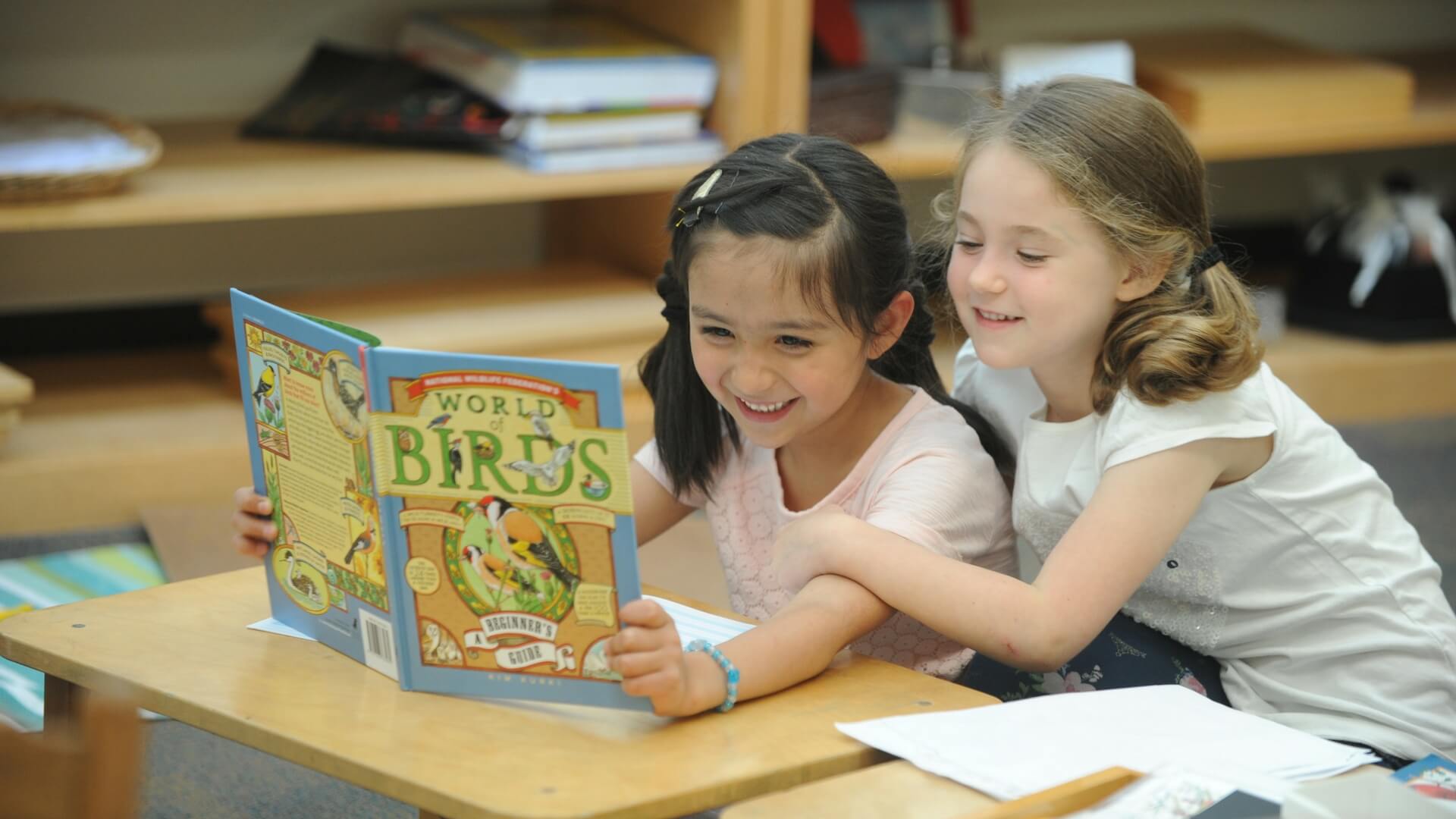Montessori classrooms enchant curious observers. How can so many young children engage so independently at once? How come everyone seems so peaceful? What’s so magical about the materials on the shelves? Montessori teachers are often inundated with requests from people who want to be observers in the classroom. While the requests can seem like an endless distraction, creating a space within which guests can learn about Montessori and children can learn lessons in grace, courtesy and boundary-setting is a natural part of the classroom that teachers should encourage. Whether you’re visiting with a research question or you’re a friend or family member more interested in the experience of a single child, guests are welcome here.
To best observe our classrooms at work, though, guests should visit in a way that doesn’t interfere with how they work. Sometimes the enthusiasm of an eager visitor interrupts the very qualities that visitor was so excited to observe! The Children’s House is rightly named: a community of children, in which children are “at home. To make guest’s observation most authentic, encourage them to treat their visit as they’d treat a visit to someone else’s home:
-
Attend to social cues about what kinds of behaviors are appropriate here. Note how quickly other adults move, how loudly they speak, how gently they interact with each other and with the children. Adults in Montessori classrooms are there in service to the children. Guests should notice them focusing on children’s needs before their own and shifting attention away from themselves by moving slowly, speaking softly and acting mindfully.
-
Encourage guests to choose a seat from which to observe that allows them to see the area of the classroom of most interest to them. Create multiple spaces that are identified for “observation,” and allow children to practice observing from those chairs as well. Once the guest is seated, encourage them to remain seated and avoid craning or moving around obtrusively. Offer observation as a lesson to the children, including predicting with them how it may feel when a new guest is observing in the classroom.
-
That said, while the children understand that guests in observation chairs are there to watch and learn from our classrooms, they may still approach or engage guests in conversation. Let your guests know it’s ok to respond! Instruct them to avoid initiating conversations with children, but let them know t’s appropriate to answer a child who approaches them and to engage in quiet conversation. Guests can respond to children’s questions, but should avoid questioning children, allowing them to return to their own activities when they choose.
-
Instruct observers (including children practicing observation) to avoid interrupting children at work. Classroom materials and routines are designed to absorb children’s attention. Children who are learning to concentrate need the opportunity to practice concentration. If a guest has a question about a child’s work, give the guest a means to ask it after the observation is over, by leaving written questions for the teachers or scheduling a time after an observation to debrief about what they’ve seen.
-
Model how to observe unobtrusively. You know how it feels when you know someone is looking at you? Children can sense that, too! Remind guests to avoid staring at an individual child for too long. Instead, gaze gently and scan the room so that your observation doesn’t become uncomfortable for the children being observed.
-
Let guests know that if they need to leave the classroom or move to another observation chair, they should move slowly and quietly. Identify what other spaces Be mindful of swinging arms or noisy feet: model instead moving through the classroom while drawing as little attention as possible. Let your guests know if they happen to make eye contact with a teacher, a quiet wave is enough to signal an exit. If the teachers are otherwise engaged, instruct them to quietly leave the classroom.
Welcoming guests is an important part of our work as Montessori teachers. There’s just no substitute for seeing our classrooms at work. Guiding your guests to observe in a way that’s consistent with the norms of the classroom both make their observations more authentic and gives them an opportunity to become a part of the classroom by experiencing the calm, mindful pace of work here. Just like with the children, carefully worded, clear instructions beforehand can make a new experience more manageable. Take the time to prepare guests before they enter the classroom, and, knowing that you will host new faces from time to time, take the time to prepare for that experience with the children. The more, the merrier!
This post first appeared on Montessori Daoshi.


